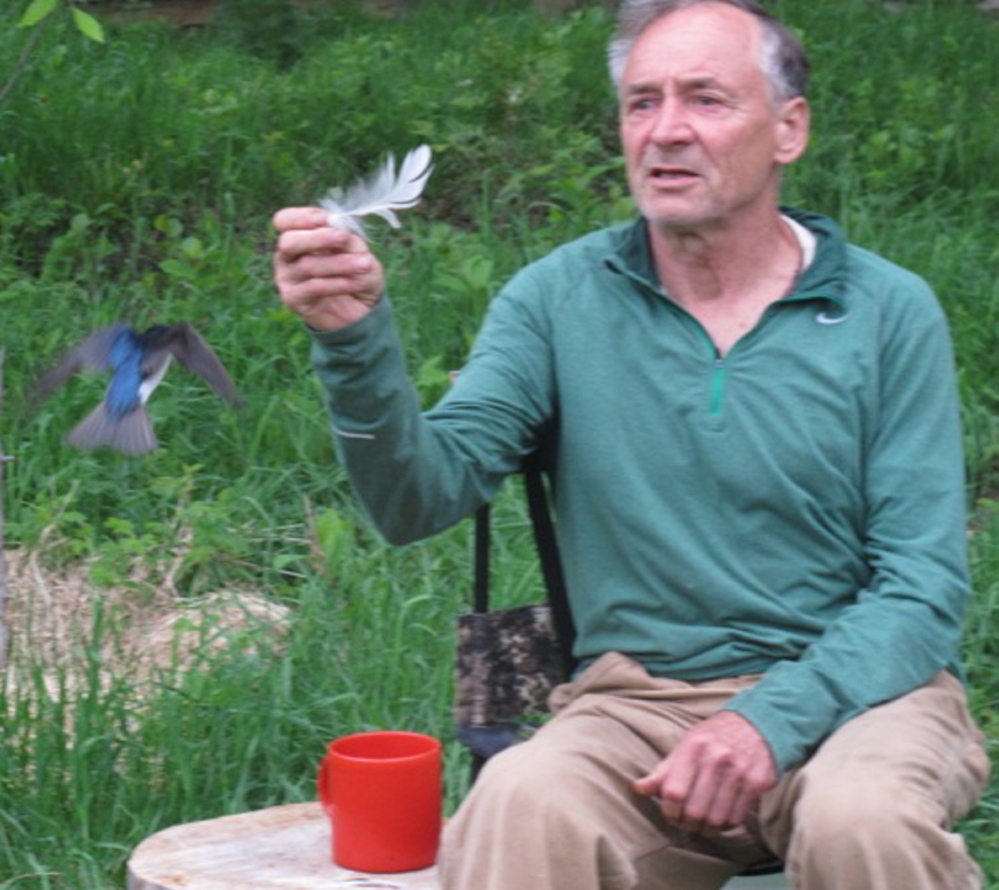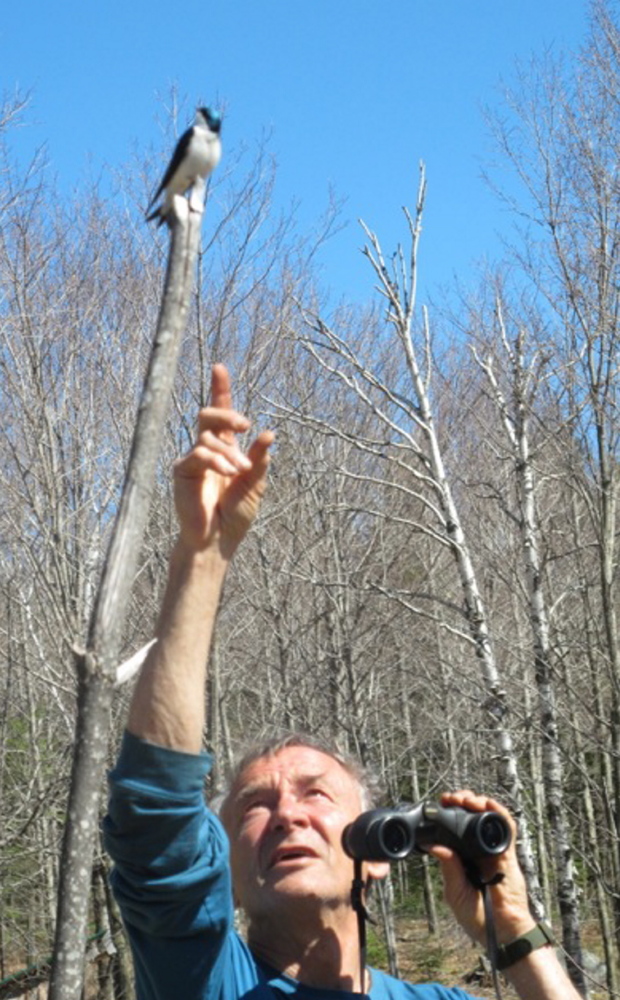Bernd Heinrich defies easy labeling. A biologist who taught at the University of Vermont for many years, Heinrich is a renowned environmentalist and naturalist. He has written some 20 books on animal behavior and the natural world, among them several bestsellers and a National Book Award finalist. An avid outdoorsman, Heinrich is equally at home studying animal life in the Maine woods or in a lab. And he’s an accomplished ultra-marathoner, who first took up competitive running three decades ago, at the unlikely age of 40.
“I didn’t think I had any chance, really,” he says. “To make something out of running was unbelievable. It’s one of the more satisfying things that I’ve done.”
Now 75, Heinrich has retired from teaching, and devotes himself full-time to field work and writing. His latest book, “The Homing Instinct,” examines the science of animal migration and home-building in his uniquely accessible, lyrical style. The author, who lives off the grid at his camp in western Maine, spoke recently about ravens and tree swallows, detective work and keeping a journal. This interview has been edited for length and clarity.
Q: On your faculty page at UVM, you say that your “main research has been at the interface between the field and the laboratory.”
A: Natural history, I think, is the fount of a lot of biology – actually going out in nature. I’m not a Skinner-box guy, looking at things in a box. Basically, I go out in the field and see something there, and then I try to understand it. I might bring it into the lab, which I have done with insects, under more controlled conditions. You have to look at the specifics under a microscope. It’s a matter of getting closer and closer and closer. But it starts from recognizing something from a distance in the natural situation.
Q: How did you come to realize that field work could be a conduit to a much wider audience outside the university?
A: Back in the ’70s, I was working with bumblebees, doing some esoteric stuff about how they regulated their body temperature. The physiology that I was studying in the lab started from field work. I had big projects going on with the bumblebees, and they all seemed kind of separate. I realized that when you look at little things in isolation, they don’t make much sense; you have to look at the whole thing. It all relates to all of life.
First, I put the research together into an article for Scientific American – for a larger audience, which forced me to look at the bigger picture. Then I put it together into the book, “Bumblebee Economics.”
Q: Prior to that, did you consider yourself a writer?
A: No, not at all. I was writing very technical papers for scientific journals. But then I’d finished one book and pretty soon I wondered, “Could I ever write another one?”
Q: I think of your books as sort of science for the rest of us, in that you demystify science often in very poetic terms.
A: Well, I didn’t realize it was a talent, but a lot of people have commented on it, and that has really encouraged me. For me, it’s very important that I be able to put a project into simple words – just to understand it, and not get bogged down in the details. The details are important, but once you have them, there’s usually a simple, understandable rationale and conclusion. That’s where beauty is – coherence.
Q: Reading your books, one could certainly get the sense that your scientific work is a form of play and that you’ve managed, in effect, to extend childhood into a professional life.
A: I’m lucky, I guess. I watch something, and it’s fun to watch, and one thing just leads to another. I’m just having fun. It is play. Unlike many scientists who have a lot of helpers and post-docs doing their work, I do all of my own. So I really get into the joy of doing it myself. I see a project from beginning to end, and I enjoy the process.
Q: Are there specific ingredients that make good science writing for a general audience?
A: I think the most basic ingredient is having something to say!
Day-to-day, I write about what’s happening at the bird feeder, I keep track of the chickadees and the nuthatches, and keep notes and random thoughts. I’m fairly habitual about writing in a journal. Then, that gradually makes me aware of things. Sometimes these things become important in a book later on. Most of the time, they may not, but at least I have preserved some of my fresh impressions as they happened.
Q: What are you working on now?
A: I have a chapter on tree swallows in my next book that’s coming out in 2016. For a number of years, I have been interested in the fact that tree swallows were lining their nests with white feathers.
Q: White feathers that they find where?
A: Exactly. Where do they get them, and why do they go for white feathers, and put them in the nest after they start laying eggs? There are some questions that don’t seem to make any sense. But I know for a fact that there has to be sense to it, so I have been watching different nests over the years, making experiments, and getting closer to them.
Q: Do you always assume that there’s a logic to what you’re seeing in the nest, and your job is to figure out what that is?
A: It’s detective work. There’s always an explanation. It might be random chance. Or sometimes there are proximate reasons – why does the animal react immediately? Or there’s the other “why” question: what is the good of it? There are different levels of reasons.
Q: You were a competitive runner for a number of years, which you wrote about in your book, “Why We Run: A Natural History.” Is there some link between being a competitive runner and a biologist?
A: In my mind, yes. In research, I find an interesting problem, and I take a step towards a solution, a hypothesis. There’s a lot of labor – simple things at the time, but they add up in the long run. When I worked with ravens, which took a couple of decades, I felt it was impossible to learn what I wanted to find out. How could they share a carcass and what was the advantage of it? But I really was determined. I decided to take one step at a time, every day, do a little something. That’s exactly what I had to do with running: One step at a time. You can’t take the second step until you take the first step. So the process is really quite similar.
Joan Silverman writes op-eds, essays and book reviews. Her work has appeared in The Christian Science Monitor, Chicago Tribune and Dallas Morning News.
Send questions/comments to the editors.




Comments are no longer available on this story